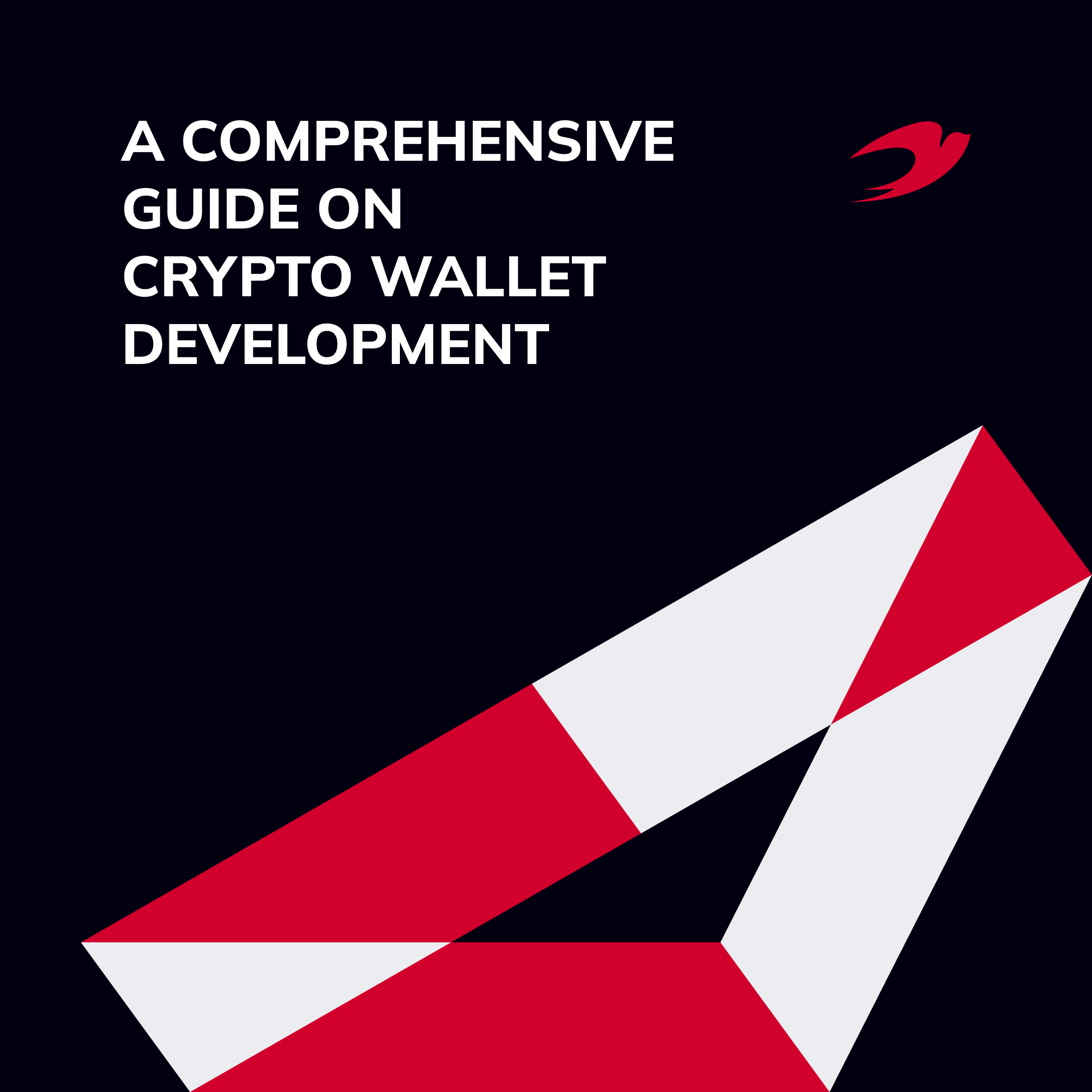There are two types of people in the world: those who still think that cryptocurrencies are a temporary trend, and others who actively use digital money in their lives and even build their fortunes on it. Today there are over 2,000 cryptocurrencies, and new ones are emerging all the time. Blockchain has opened up new business opportunities for us. According to Fortune Business Insights, by 2027 the global blockchain market will reach $69.04 billion. So, it’s not surprising that cryptocurrencies have become a new way of investing. Probably, most market players, inspired by the success of Binance and Coinbase, have thought at least once about how to create their own cryptocurrency exchange. Having experience in developing cryptocurrency exchange platforms, we decided to put together a detailed guide to help you create a quality software product. The case study included.
Table of contents:
- How does a cryptocurrency exchange platform work?
- Types of crypto exchanges
- Key features of a crypto exchange platform
3.1 User authorization
3.2 Trading engine
3.3 User interface
3.4 Wallet
3.5 Order book and transaction history
3.6 Analytical tools for traders
3.7 Push notifications and alerts - What to look for when developing a cryptocurrency exchange platform
4.1 Security
4.2 Regulatory сompliance
4.3 Liquidity management - Cryptocurrency exchange platform development process
- How IdeaSoft can help you build a crypto exchange platform (Biteeu case study)
How does a crypto exchange platform work?
Crypto exchanges are online platforms that allow you to buy, sell, and transfer cryptocurrencies. They are distinguished by high transaction speed and lower fees, which makes them attractive for both small and large investors. By registering on such an exchange, users can buy and sell digital money, tracking changes in their exchange rates and earn from it. A transaction is carried out as follows.
- A user creates exchange requests by setting the value and volume of a cryptocurrency.
- If a suitable counter-offer has already been registered on the site, a deal is concluded between users.
- An exchange earns a percentage of the transaction amounts. This percentage varies from exchange to exchange. For example, Binance only charges 0.1% on every trade made, as well as small fees for currency withdrawals.
For a user, any exchange looks like a regular site with updated information about rates, a base of orders for buying or selling, where network participants can conduct trading operations based on the data provided. But this is just a facade behind which powerful logic is hidden. After all, a crypto exchange must provide a variety of operations from creating accounts, checking balances to transferring funds between wallets and withdrawing currency. Also, we are interested in the high speed of transactions and security as one of the crucial factors of user trust.
Types of crypto exchanges
Before starting to compile a list of required features, you should understand the types of crypto exchange platforms. There are several types of crypto exchanges:
- Centralized exchanges. This is the most common type of exchange. Such exchanges have a centralized operator who is responsible for security, updates, and functionality. Centralized exchanges manage order books, which record all buy and sell orders. The weak point of this type is that coins are stored in the services themselves, which increases the likelihood of losing your funds due to hacker attacks. Therefore, centralized exchanges work hard to ensure the proper level of security.
- Decentralized exchanges. Decentralized exchanges provide transfers of funds directly between users’ wallets. This reduces the potential for theft from exchange hacking since the exchange never actually stores cryptocurrency. However, you should keep in mind that in such exchanges, the lack of moderating third-party shifts all responsibility for errors and security to the users themselves.
- Peer-to-peer exchanges. P2P exchanges provide the sale and purchase of cryptocurrency directly between users. Traders leave their orders as on a bulletin board, and other network participants can respond to the offers and agree on the terms of buy/sale.
- Instant exchange. These exchanges are very easy to use. They allow users to instantly exchange one cryptocurrency for another. All you have to do is enter a trade order and it will be immediately executed. This is possible because instant exchanges provide access to the trading pairs of many different exchanges on one central service.
You can also find hybrid exchanges, these are ones that combine properties of centralized and decentralized exchanges to improve the quality of services. For example, an exchange might be managed by third-party operators while giving users more control over their funds.
| Criterion | Centralized | Decentralized | P2P | Instant |
|---|---|---|---|---|
| Liquidity | High | Low | Low | Moderate |
| Security | Low | High | High | High |
| Coin holder | Exchange | User | User | User |
| Fiat availability | Yes | No | No | No |
| Examples | Binance, Bitfinex,Kraken | Etherdelta, IDEX,Tokenlon | Paxful,LocalBitcoins, Remitano | ShapeShift, Changelly, SimpleSwap |
Key features of a crypto exchange platform
An exchange is a complex platform and you need to think over its functionality well to build a good software product. Whether you want to provide trading of one cryptocurrency or many, you need to start with the core features that your platform should have. The structure of a crypto exchange usually consists of the following basic elements.

User authorization and verification
The user’s path to your exchange begins with authorization, so you need to provide a simple onboarding process. At the same time, users expect the members of this network to be trusted and with good intentions. Verification is important to ensure the transparency of transactions and to minimize the possibility of fraud. Also, it confirms that cryptocurrency exchange complies with international standards. Enable anti-bot verification and two-factor authentication (2FA), ask users to verify their identity with their ID and photo. You need to eliminate any possibility of unauthorized access to accounts to ensure the safe storage of users’ data.
Of course, people are less willing to provide personal data for verification. It is your job to mitigate their concerns and show that you are not going to share information with third parties. Good UX/UI design can help you make the registration process consistent and user-friendly.
Trading engine
Trading engine is the core of your platform. It’s responsible for the functionality of your exchange. For example, here the system checks funds in user accounts, and the possibilities for a transaction, process information about prices and commissions, creates schedules, matches up the offers and bids, and the like. To effectively manage their investments, users need to see real-time trading data, so you need to ensure good processing speed.
Engine development is one of the most difficult parts of developing a crypto platform. You will need a truly experienced blockchain development team to build an effective architecture and lay the correct logic for the exchange.
User interface
The user interface is how people see your exchange. The interface should be simple, clear, and user-friendly. By providing users with an enhanced trading experience, you can count on loyalty. Using the admin panel, a user should be able to place buy and sell orders, view the current order book, past transactions, balances, statistics, etc. Graphs and diagrams make information easier to read. By creating a simple and intuitive interface, you can reduce the time to create and conduct transactions, ensuring the efficiency of your exchange.
Typically cryptocurrency exchanges use a type of chart called candlestick charts. Each candlestick in it shows rate change for the selected period, where green means an increase, and red means a fall.
Crypto exchange dashboard should provide quick access to features such as:
- Creating and canceling orders
- Market monitoring
- View order history
- Withdraw funds
- Contacting support and more.

Wallet
Wallets allow you to store and transfer your digital money. Usually, when registering, a user immediately receives a wallet. The e-wallets for digital currencies that you provide on your platform must enable secure transactions for withdrawing your virtual money and converting it to fiat currency. Think about how users can replenish their wallets and withdraw funds from them to a card or account. For example, Coinbase allows you to connect a US bank account and easily transfer dollars to or from your wallet. There can be direct bank transfers in manual mode, or Visa or MasterCard services can be used in automatic mode.
One more thing. There are 2 types of wallets, cold and hot. A hot wallet is the main wallet that is used for crediting users’ funds to the balance and for withdrawing funds. A cold wallet is used as a backup since it is not connected to the Internet and so it is protected from fraud. To secure the exchange from hacking, it often transfers funds from a hot wallet to a cold wallet and vice versa. Decide if you want to provide your users with a cold wallet or just a hot one.
Order book and transaction history
Other essential features of good exchange are order book and transaction history. Exchanges group the actual buy and sell orders separately, and the formed list of open orders is called an order book. When an order finds the offer that matches its conditions, an exchange automatically concludes a deal between users, and the executed orders disappear from the list. An order book allows users to navigate the current bids.
The list of completed trades or trade history contains key information about the transactions, such as the trade rate, its amount, and the exact time of the operation. History helps users track the performance of their activities. Building your crypto exchange don’t forget about these features.
Analytical tools for traders
The next feature that will help you attract advanced traders to your exchange is the internal analytical system. Analytical tools allow traders to get additional information about market trends and develop their game strategies. There are tons of technical indicators that traders use, so you should decide what indicators you want to implement in your crypto exchange platform. For example, the Relative Strength Index (RSI) shows the strength of a trend and the likelihood of a trend change. This indicator measures the magnitude of recent price changes and displays the rate at which the price is changing. Moving Average (MA) is another important indicator that is based on past price data and helps traders identify trends by showing the average price over a selected period. Also, popular indicators are Moving Average Convergence Divergence (MACD), which helps in predicting price fluctuations, Stochastic RSI (StochRSI) for identifying oversold and overbought zones, Bollinger Bands (BB), and others.
Push notifications and alerts
Push notifications will help you maintain communication with your users. Push notifications and alerts are convenient both for you and for traders because they will not miss important events. With the help of alerts, you can notify users about promotions, news, and special offers. Traders, for example, can see notifications about price changes, trend changes, coin listing alerts, track exchange listings, and the like. But there is one point. Don’t forget to let users choose which notifications they want to enable. Alerts should be helpful, not annoying.
What to look for when developing a cryptocurrency exchange platform
When developing a crypto exchange, you should make sure that your platform meets some of the requirements and recommendations of Fintech regulation. This includes both regulatory compliance and security standards. So this is what you should pay special attention to when creating an exchange platform.
Security
Security is a key property of any platform that deals with money. If you want to create a successful crypto exchange, you need to pay special attention to the security of data storage and transactions. There are more and more methods of hacker attacks, attackers can either attack your server or hack the admin panel, or attack specific users. Your task is to prevent them from doing this.
When it comes to securing user accounts, we recommend you to use basic security methods, including two-factor authentication, secure libraries and frameworks, manual administrator confirmation of large transactions, and cold wallets. We also mentioned the importance of user verification, especially if you work with cryptocurrency exchanges for fiat pairs and vice versa. We advise you to follow KYC (Know Your Customer) and AML (Anti Money Laundering). The main purpose of KYC is to make sure that unauthorized users are prohibited from using the service, which is why you ask users for relevant identification documents such as photos, IDs, bank account or credit card details, etc.
If you have chosen a centralized exchange type, you will probably need administrators to manage it. Take care of the safety associated with this. Create roles so that each person has access to a small piece of the necessary information and doesn’t have access to the entire database. Especially important operations should require a confirmation from several admins.
Other ways to ensure security are regular backups, validation of amounts, secure integration with external services (CRM, email, SMS, payment gateways), and more. Discuss with your development team how to implement other advanced security techniques for your platform.
Regulatory сompliance
Compliance is always a plus for the platform. This increases user trust. Moreover, if you intend to work with fiat money, you will most likely have to meet state and government standards. You may need a license, bank account. It all depends on the state in which you are going to register your exchange. If you want to work exclusively with cryptocurrency on blockchain, then regulation is not so important for you, but you should keep in mind that you will also receive any earnings in cryptocurrency.
The best countries for registering cryptocurrency exchanges are those that have been working with cryptocurrency and blockchain for a long time. Among them are Estonia, Malta, Switzerland, Australia, Singapore. For example, Estonia became the first country in the world to implement blockchain at the state level. Read our Where to start implementing blockchain article to find out more about crypto and blockchain regulation around the world.
Liquidity management
Liquidity is one of the most important factors in cryptocurrency exchange. Traders are looking for a platform that will allow them to easily exchange one asset for another. In other words, an exchange must provide enough buy or sell orders to complete the transaction at a reasonable price. Therefore, when creating your own crypto-exchange, you need to think over mechanisms to ensure liquidity. Three promising options are third-party market makers, cross-exchange market making, and liquidity mining.
- Third-party market makers. This path involves an agreement with providers who usually trade simultaneously in many different places and can provide the liquidity necessary for one site by entering into transactions on other sites.
- Cross-exchange market making. This strategy also allows you to contact a market maker, but this manufacturer is the site operator, not a third-party. At the same time, this operator is a market maker on one or several other exchanges.
- Liquidity mining. This method of maintaining liquidity is most related to cryptocurrency as it relies on decentralized community support. Its essence is that liquidity providers are rewarded for facilitating trade.
Cryptocurrency exchange platform development process
After working through the business part, technical requirements, and choosing the type of exchange, you can start developing your crypto exchange. Make sure you work with a team of experienced developers who can provide you with successful case studies. Choosing an experienced provider will help you reduce development costs. The development process of a crypto exchange platform usually consists of the following stages.
- UX/UI design. Based on your requirements and market research, a team of designers creates an effective user interface for your platform. Detailed visualization will allow you to prevent possible UX-related issues and make you see the logic of user interaction with the exchange.
- Front-end development. The front end is the implementation of the user interface design. At this stage, developers create a user-visible side of your exchange. The front end part is responsible for the look and feel of your platform which is very important for attracting and engaging users.
- Back-end development. The back-end part is responsible for the logic of your platform and all the necessary operations. A development team can use the product of a traditional trading exchange, optimized depending on the exchange incorporation geography. Then this framework is changed to suit your requirements and an individualized trading engine is created. The company can also use various APIs for additional integrations with third-party resources.
- Developing enhanced security features. At this stage of the development process, specialists implement various security features to make the platform reliable both for you and for future users. One of the most important security measures is an encrypted database and password-protected user access.
- Listing of the digital currency on the exchange. Having an idea of what cryptocurrencies you want to be listed on your exchange, the development team adds the necessary coins to the platform. After that, users will have the opportunity to buy and sell different types of cryptocurrencies.
- Launching the exchange. After all the tests and improvements, your crypto exchange platform is ready to go. There is a lot of work ahead to promote and support, but with a high-quality software product, these processes will be much easier.
The nature of blockchain technology and cryptocurrency trading makes them highly dependent on the quality of software development, so we advise you to take sufficient time to choose the right blockchain development partner.
How IdeaSoft can help you build a crypto exchange platform (Biteeu case study)
The IdeaSoft team has extensive experience in blockchain development. Over the past 5 years, we have developed dozens of blockchain-based solutions, including crypto exchange platforms. One of the latest projects is Biteeu. Let me tell you more about it.
The team had a task to develop a fully licensed and compliant cryptocurrency exchange for the European Union. Having studied the requirements, we selected the necessary tech stack and created a powerful and reliable platform for traders, including the following features:
- Wallet with more than 50 virtual currencies and the ability to add new ones.
- Security features – all data is stored on remote servers and protected 24/7.
- Fully customizable TradingView chart with advanced trading tools.
- Multilingual – the platform is available in several languages, including English, Russian, and Chinese.
- Multiplatform support (Web, iOS, Android, Windows, macOS).
- Mobile app based on the wide order book and fiat money integration.
The development of the project took about 12 months. The IdeaSoft team also created the design for Biteeu.
Taking advantage of our full-cycle software development services, you don’t have to hire different teams to bring your idea to life. The internal expertise of IdeaSoft allows us to solve a wide range of tasks using company resources. We will help you with design, development, testing, and support.
If you are looking for a reliable development partner to build a crypto exchange platform, we look forward to cooperating. Drop us a message for a free project estimate or consultation with a technical specialist.




